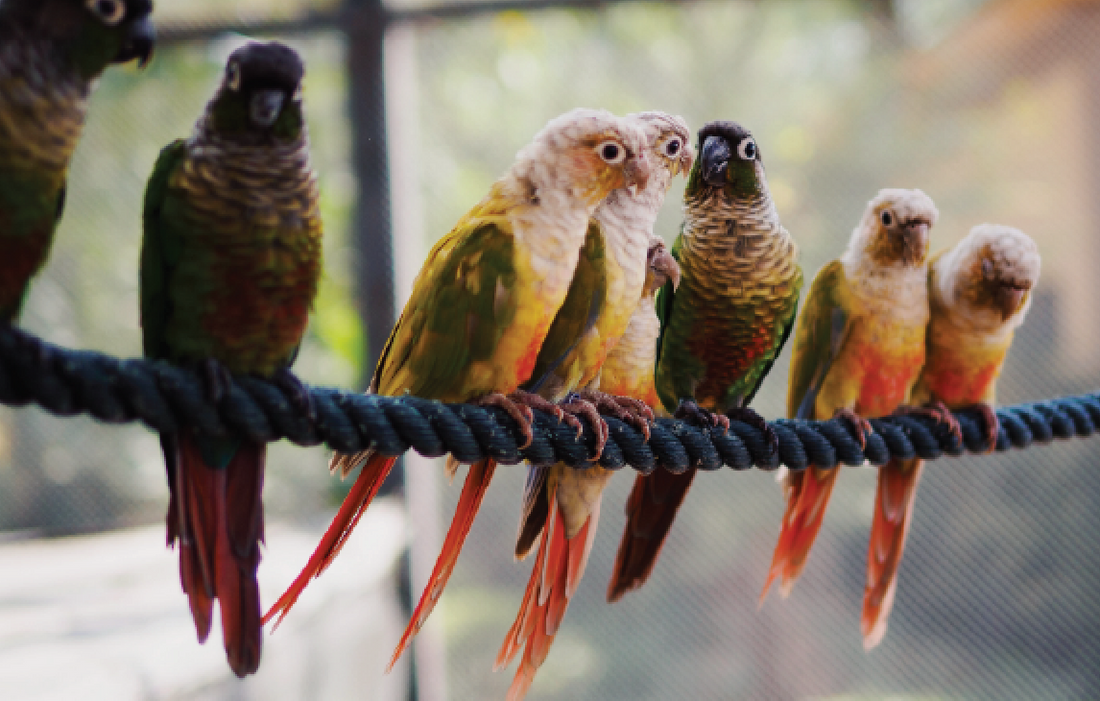
Discussion on Avian Chlamydia psittaci
Share
Discussion on Avian Chlamydia psittaci
This zoonotic disease that is known as “parrot disease” is caused by a bacteria that often manifests as severe pneumonia and other serious health problems in humans. This obligate intracellular bacteria can be transmitted from birds to humans. Often the clinical signs in humans are subclinical or brief. The disease often consists of a self-limiting influenza-like illness, but ranges to potential multi-organ failure, however with appropriate antibiotic therapy the infection is rarely fatal.

Photo above from www.melbournebirdvet.com
The people at the greatest risk are those exposed to birds in a recreational or occupational situation such as pet bird owners, poultry employees, veterinarians, wildlife workers, etc. This infection is often not reported as contact with birds is not often recalled when presented to a doctor. This bacteria can be isolated commonly from parrot-type birds especially cockatiels and budgerigars. Other species that can carry infections can include: pigeons, doves, chickens, turkeys, ducks, canaries and finches.
Infection in humans with C psittaci occurs when a person inhales organisms that have been aerosolized from dried faeces or respiratory tract secretions infected birds or mouth to beak contact. Handling of infected birds’ plumage and tissues is also a risk. Person to person transmission is thought to occur but has not been demonstrated. Bacterial shedding in birds can occur in discharge from the eyes and nasal openings as well as faeces.
Shedding can be exacerbated by stress factors such as molt and reproductive activities, among others. The bacteria is killed easily in the environment unless protected by organic debris such as litter and bodily fluids. Incubation period (time between infection and clinical signs) ranges from 3 days to several weeks. Clinical signs in birds can range for a variety of reasons, and can be non-specific, from very subtle respiratory signs/mild conjunctivitis to death.
Clinical signs can include:
- Lethargy
- Anorexia
- Ruffled feathers
- Conjunctivitis as well ocular and nasal discharges
- Upper respiratory disease signs
- Diarrhea
- Green/yellow urates
Diagnosis often depends on a good history as well as an association with a confirmed case in humans or birds. PCR detection of a swab from the discharge, blood or faeces is often the best method but this test may be limited depending on the lab capability and test kit availability. Fluorescent antibody staining is available but is not considered sensitive enough as it cross reacts with non-chlamydial epitopes. Treatment is normally done with antibiotics and is quite effective.
Prevention of the spread of this disease can be fairly simple as well. The most effective ways of minimizing transmission are:
1) Wearing protective gear such as masks (respirator or N95 mask) and eye protection (as well as clothes covers) to clean the enclosure or surrounds of a confirmed cases.
2) Quarantine of newly acquired birds or exposed birds in separate air spaces away from other birds and non-caretakers for at least 30 days. These birds should be tested prior to being introduced into the flock.
3) Disinfection of enclosures by thoroughly removing all organic debris before disinfection. The bacteria is susceptible to many detergents and disinfectants as well as heat (but resistant to acid/alkali). 1:1000 dilution of quaternary ammonium, 1% Lysol, 1:32 dilution household bleach are all effective. Other efforts can be effective but these are proven to be the most reliable.


